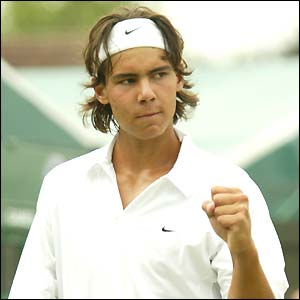The ‘born versus bred’ or ‘nature vs nurture’ question dates back to the 1800s, and the theory of Sir Francis Galton which posited that mental capacities are limited by hereditary factors (Galton 1869, (1). The Galtonian model proposed that practice and training would lead to improvements in performance, but that a ceiling existed for each person, influenced by heritable characteristics (1). In contrast, Ericsson and others (1-3) have suggested that performance is constrained not by genetic or innate factors, but by engagement in deliberate practice and training during optimal periods of development.
Individuals who coach or train tennis athletes are very interested in how much influence a coach actually has on improving an athlete’s performance compared to the athlete’s genetic capabilities. This improvement requires a multitude of factors to contribute to success. Unfortunately, the mass media has jumped on singular statements and have either overemphasized or underemphasized certain research studies or concepts without taking into account the uniqueness of the human spirit, human biology, family and social support, and a number of other factors (including genetics) in the determination of elite athletic performance. It is important to stipulate that becoming an expert in a certain skill (think 10,000 hours/10 year rule that has been credited to the work of Ericsson) is not the same as becoming a highly paid professional athlete. Thousands of people (possibly even hundreds of thousands of people) can become experts in a field; only a few hundred can actually become a highly paid professional tennis player. This is where most people misunderstand the bulk of the research surrounding deliberate practice. Just because the athlete puts in the appropriate hours and years of deliberate practice does not mean the athlete will be a successful professional tennis player. However, the athlete will become an expert at his/her craft (tennis). Therefore, it is important to think of deliberate practice as a required component to be successful as an elite tennis athlete, but this is just the starting point. The physical training component and the genetic ceiling that the athlete has is also vitally important for the athlete to become a true elite professional athlete. These factors all need to be part of the equation, as it is very challenging to become a professional tennis athlete. Therefore, like most long term debates in life - the answer lies somewhere in between both perspectives. Great genetics are required (physical, mental and emotional) but the daily deliberate practice combined with the right family/social support and resources (financial and otherwise) are very much required to achieve elite athletic performance on the tennis court. For more information the iTPA has provided a number of research studies related to genetics and talent in elite athletes:
Talent identification and promotion programmes of Olympic athletes.
http://www.ncbi.nlm.nih.gov/pubmed/19787538?dopt=Abstract
Talent identification and deliberate programming in skeleton: ice novice to Winter Olympian in 14 months.
http://www.ncbi.nlm.nih.gov/pubmed/19191166?dopt=Abstract
Genes and human elite athletic performance.
http://www.ncbi.nlm.nih.gov/pubmed/15726413?dopt=Abstract
Genetics of athletic performance.
http://www.ncbi.nlm.nih.gov/pubmed/19630564
Genes and elite athletes: a roadmap for future research.
http://www.ncbi.nlm.nih.gov/pubmed/21540342
Elite athletes: are the genes the champions?
http://www.ncbi.nlm.nih.gov/pubmed/20308700
What makes a champion? Explaining variation in human athletic performance.
http://www.ncbi.nlm.nih.gov/pubmed/16448865
(1) Ericsson KA, Nandagopal K, Roring RW. Toward a science of exceptional achievement: attaining superior performance through deliberate practice. Ann N Y Acad Sci 2009;1172:199–217
(2) Ericsson K, Krampe R. The role of deliberate practice in the acquisition of expert performance. Psychol Rev 1993;100:363–406.
(3) Duffy L, Baluch B. Dart performance as a function of facets of practice amongst professional and amateur men ana women players. Int J Sport Psychol 2004;35:232–45





 RSS Feed
RSS Feed
